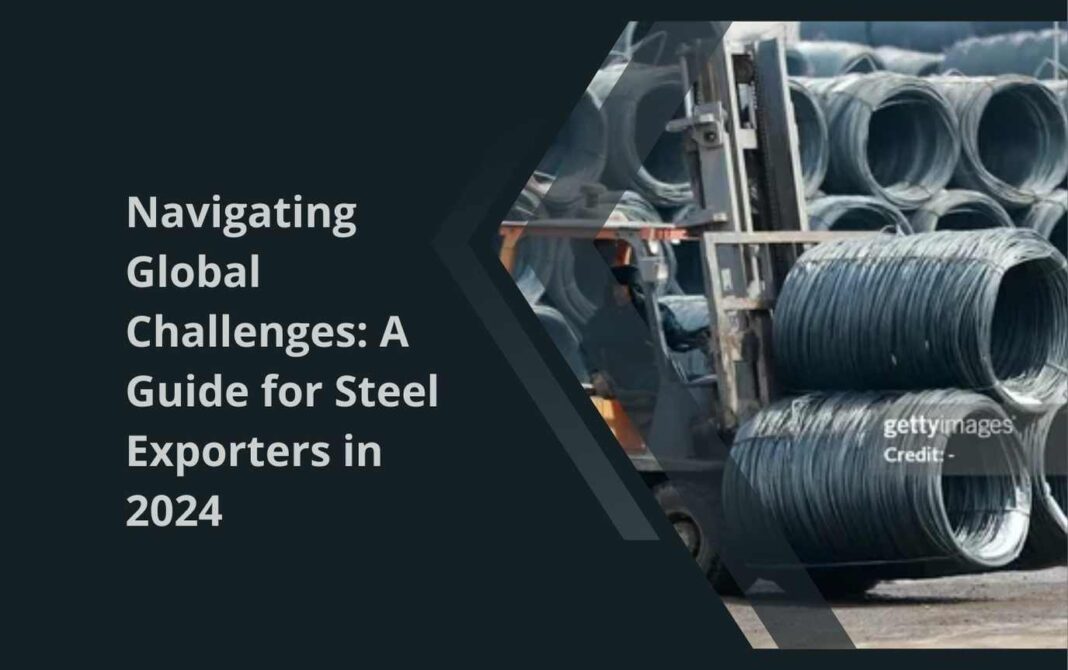The steel industry is a vital part of the global economy, providing essential materials for construction, manufacturing, and infrastructure. As we move into 2024, steel exporters face a unique set of challenges and opportunities. This guide will help you navigate these challenges, understand market dynamics, and explore strategies to succeed in the global steel export market.
Understanding the Global Steel Market
The Importance of Steel in the Global Economy
Steel is fundamental to many industries. It is used in building skyscrapers, bridges, automobiles, and household appliances. Its versatility and strength make it indispensable. The demand for steel is closely tied to economic development and industrial growth, making the steel market a key indicator of economic health.
Key Players in the Global Steel Market
The global steel market is dominated by a few major players. China, India, the United States, and the European Union are the largest producers and consumers of steel. Understanding the dynamics in these regions is crucial for exporters. These countries have significant influence on steel prices, demand, and trade policies.
Current Trends in the Steel Industry
Several trends are shaping the steel industry in 2024. These include:
- Technological Advancements: Innovations in steel production are making processes more efficient and environmentally friendly.
- Sustainability Initiatives: There is a growing emphasis on reducing carbon emissions and adopting sustainable practices.
- Trade Policies: Changes in trade agreements and tariffs can impact the flow of steel across borders.
- Market Demand Fluctuations: Economic conditions, construction booms, and industrial activity influence steel demand.
Challenges Faced by Steel Exporters
Trade Barriers and Tariffs
Trade barriers, such as tariffs and quotas, can significantly impact steel exports. Countries often impose these measures to protect their domestic industries. Exporters need to stay informed about current and upcoming trade policies to navigate these barriers effectively.
Supply Chain Disruptions
The COVID-19 pandemic highlighted vulnerabilities in global supply chains. Disruptions can arise from various factors, including natural disasters, geopolitical tensions, and labor strikes. Exporters must develop resilient supply chains to ensure timely delivery and maintain customer trust.
Environmental Regulations
Stringent environmental regulations are being implemented worldwide to combat climate change. Steel production is a major source of carbon emissions, and exporters must adapt to these regulations. This may involve investing in cleaner technologies and adopting sustainable practices.
Competition from Emerging Markets
Emerging markets are becoming significant players in the steel industry. Countries like India and Brazil are ramping up production and export capabilities. This increased competition can pressure established exporters to improve their offerings and reduce costs.
Strategies for Success in Steel Exporting
Diversifying Export Markets
Relying on a single market can be risky. Exporters should diversify their markets to reduce dependency and spread risk. Exploring new regions with growing demand for steel can provide stability and growth opportunities.
Investing in Technology and Innovation
Technological advancements can enhance production efficiency and reduce costs. Investing in innovative technologies, such as automation and advanced manufacturing techniques, can give exporters a competitive edge. Additionally, adopting digital solutions for supply chain management can improve logistics and customer service.
Embracing Sustainability
Sustainability is no longer a choice but a necessity. Exporters should adopt sustainable practices to meet environmental regulations and appeal to eco-conscious customers. This can include using recycled materials, improving energy efficiency, and reducing carbon emissions.
Building Strong Relationships
Strong relationships with suppliers, customers, and industry partners are crucial. Building trust and reliability can lead to long-term partnerships and repeat business. Regular communication and understanding customer needs can help exporters tailor their offerings and provide better service.
Navigating Trade Policies
Staying Informed About Trade Agreements
Trade agreements between countries can open up new opportunities or present challenges. Exporters should stay informed about current and upcoming trade agreements that could affect their business. Understanding the terms and conditions can help exporters take advantage of favorable agreements and prepare for potential barriers.
Lobbying for Favorable Policies
Engaging with industry associations and government bodies can help exporters advocate for favorable trade policies. Collective efforts can influence policy decisions and create a more conducive environment for steel exports. Exporters should participate in industry forums and collaborate with other stakeholders to address common challenges.
Managing Currency Risks
Currency fluctuations can impact export revenues and costs. Exporters should employ strategies to manage currency risks, such as using hedging instruments or invoicing in stable currencies. Monitoring exchange rates and working with financial experts can help mitigate these risks.
Enhancing Supply Chain Resilience
Identifying Vulnerabilities
Exporters should assess their supply chains to identify potential vulnerabilities. This includes evaluating suppliers, transportation routes, and logistics processes. Understanding weak points can help exporters develop contingency plans to address disruptions.
Building Flexibility into Supply Chains
Flexibility is key to handling supply chain disruptions. Exporters should build flexibility into their supply chains by diversifying suppliers, maintaining buffer stocks, and using multiple transportation modes. This can help ensure continuity of operations during unforeseen events.
Leveraging Technology for Supply Chain Management
Digital tools and technologies can enhance supply chain management. Exporters should invest in supply chain management software to track shipments, manage inventory, and optimize logistics. Real-time data and analytics can provide insights to make informed decisions and improve efficiency.
Meeting Environmental Standards
Adopting Clean Technologies
Clean technologies can reduce the environmental impact of steel production. Exporters should invest in technologies such as electric arc furnaces, carbon capture and storage, and energy-efficient processes. These technologies not only help meet environmental standards but also improve operational efficiency.
Implementing Sustainable Practices
Sustainability extends beyond production. Exporters should implement sustainable practices across their operations. This includes optimizing resource use, reducing waste, and promoting recycling. Engaging in corporate social responsibility initiatives can also enhance the company’s reputation and appeal to customers.
Certifying Environmental Compliance
Obtaining certifications for environmental compliance can provide a competitive advantage. Certifications such as ISO 14001 demonstrate a commitment to environmental management. Exporters should pursue relevant certifications to build credibility and meet customer expectations.
Competing in a Global Market
Understanding Market Dynamics
Exporters should conduct market research to understand the dynamics of their target markets. This includes analyzing demand trends, customer preferences, and competitor activities. Understanding market dynamics can help exporters tailor their strategies and offerings to meet market needs.
Differentiating Products and Services
Differentiation is crucial in a competitive market. Exporters should focus on offering high-quality products and exceptional services. This can include providing customized solutions, ensuring timely deliveries, and offering value-added services such as technical support and after-sales service.
Leveraging Digital Marketing
Digital marketing can help exporters reach a wider audience and build brand awareness. Exporters should leverage digital marketing channels such as social media, search engine optimization, and online advertising. Creating informative content and engaging with customers online can enhance visibility and attract new business.
Conclusion
Navigating global challenges requires a proactive approach and strategic planning. Steel exporters must stay informed about market trends, adapt to changing regulations, and invest in technology and sustainability. By diversifying markets, building strong relationships, and enhancing supply chain resilience, exporters can thrive in the competitive global market. Embracing these strategies will help steel exporters succeed in 2024 and beyond.
Note :- For more insightful articles related to this topic, feel free to visit nycityus.com.



